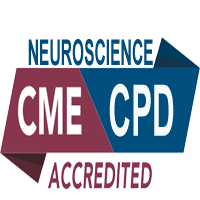
Peter Poortvliet
University of Queensland, Australia
Title: Quantification of tremor and rigidity during deep brain stimulation surgery for Parkinson’s disease
Biography
Peter Poortvliet has a degree in Human Movement Sciences from the Vrije Universiteit in Amsterdam the Netherlands and has implemented and managed a sports centre focused on social and physical activation of special needs and minority groups (e.g., drug and alcohol addicts, people with mental and/or physical disabilities and people on social welfare). He has also worked as an Educational Advisor for the Netherlands School of Public and Occupational Health tasked with the development of professional training programs for health care professionals to improve their clinical and scientific effectiveness. He has completed a PhD in Neuroscience at the UQ School for Health and Rehabilitation Sciences in 2013 where he investigated the effects of acute pain on postural motor control. He is now employed as a Post-doctoral Research Fellow for the Asia-Pacific Centre for Neuromodulation and the Centre for Sensorimotor Performance investigating the direct and long-term effects of deep brain stimulation on motor and non-motor symptoms of patients with neurological disorders
Abstract
Objective: The aim of this study is to validate practical and objective measures to assess changes in rigidity and tremor due to micro-lesion effects and test stimulation during deep brain stimulation (DBS) surgery. Background: Several factors contribute to accuracy and success of electrode placement during DBS surgery for Parkinson's disease. Intra-operative test stimulations and subsequent evaluation of beneficial as well as potential adverse effects are the final and perhaps most important step in placement accuracy. However, these subjective clinical evaluations rely on clinical experience and expertise and are accompanied by both inter- and intra-rater variability. Objective quantification of baseline symptomatology, as well as subtle symptom changes, can standardize assessment, minimize variability and further improve surgical accuracy and more importantly clinical outcomes. Methods: Appropriate tremor or rigidity measurements (accelerometer and passive resistance) were taken at three time points with and without dual task, 1) before insertion of the electrode 2) directly following insertion prior to test stimulation and 3) during test stimulation at target level. Results: Data has been collected from one patient so far and preliminary analysis shows an immediate and significant reduction in rest tremor upon electrode placement and subsequent test stimulation. Data collection is currently ongoing and our aim is to finalize data collection for tremor and rigidity changes from at least 10 consented patients by early February. This will allow a complete and detailed report of analysis and results at time of presentation. Conclusions: The preliminary data looks promising and the practicality of objective tremor measures is unambiguous. Together with newly collected data report will allow for clear conclusions regarding the validity, applicability and standardization of tremor and rigidity measures during DBS surgery.

Said M Al Maawali
The Royal Hospital, Oman
Title: 32 years old female with pulseless carotid
Biography
Said M Al Maawali is working in Stroke Unit at the Royal Hospital Sultanate in Oman. He has published more than 5 papers in reputed journals.
Abstract
Takayasu arteritis (TA) is a granulomatous large vessel vasculitis that involves the aorta, its major branches and pulmonary arteries. Diagnosis of TA remains challenging due to the non-specific symptoms. Given its systemic nature, Takayasu’s arteritis has multiorgan involvement, with the majority of disease morbidity related to the cardiovascular, central nervous and renal systems. Despite the increasing identification of young adult with TA, reports of disease in young population are still scarce. A 32-year old lady, presented to neurology outpatient clinic as a referral from primary health care with h/o sudden onset slurring of speech that lasted for almost 24 hours with full recovery after. A month later she presented with dense left upper limb weakness that gradually improved but with residual deficit. She gave no other symptoms apart from significant unintentional weight loss (15 kg last 6 months) and non specific bilateral lower limbs joints pain. She has negative family history for stroke. She was not on any regular medications. Her clinical examination revealed a thin built female with blood pressure of 154/95 mmHg, heart rate of 91 beats/min, respiration rate of 20/min and body temperature of 36.9ºC. It was also found that she has pulseless right carotid artery, weak left carotid artery pulse with significant bruit; weak pulses of left brachial artery and bilateral popliteal arteries; Left upper limb hemiparesis with power of 4+/5 (proximally as well as distally) and normal symmetrical reflexes with flexor planters bilaterally. Other clinical examination was not remarkable. This case illustrates a severe presentation of a rare illness. The patient came in with an uncommon complaint in her age. Her disease had progressed to a point where her long term survival is in jeopardy. Her CT angiography was particularly impressive for the amount of stenosis and collateralization required to maintain blood supply to the brain. It is important to suspect Takayasu's arteritis in young women who present with focal weakness or cryptogenic stroke. The disease course can be significantly modified by medications or radiological interventions, and requires frequent follow up. In the case of aggressive disease and non compliance, the disease would most likely prove to be fatal.

